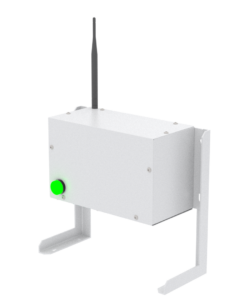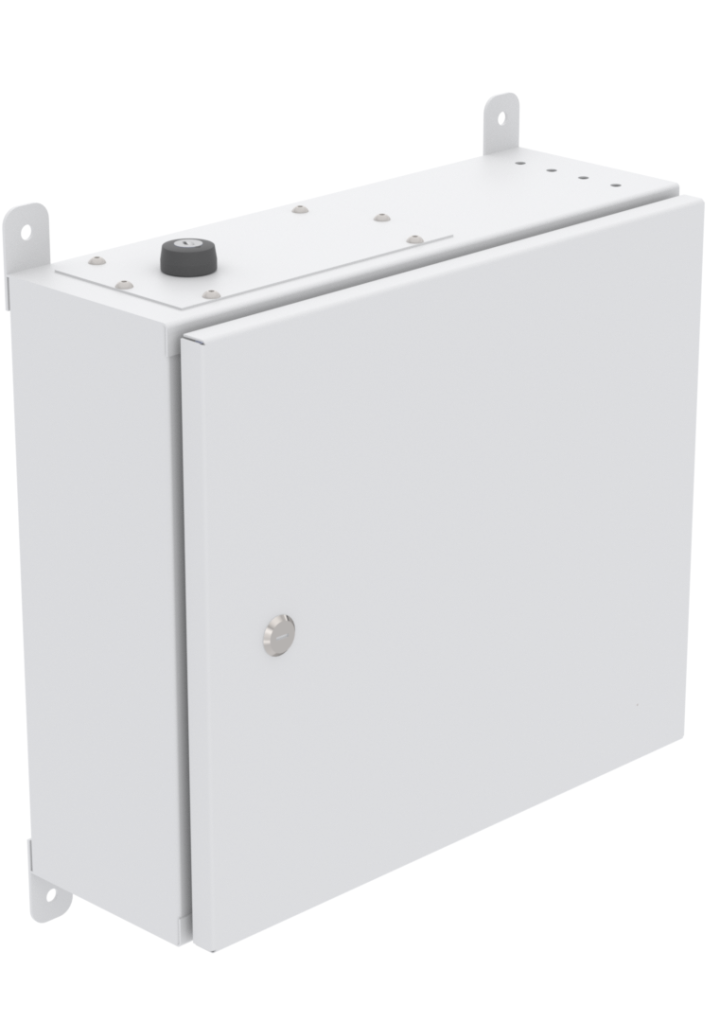The automotive industry is undergoing rapid transformation, with automation playing a crucial role in improving efficiency, productivity, and cost-effectiveness. One of the key innovations in modern automotive manufacturing is the deployment of Automated Guided Vehicles (AGVs) and Autonomous Mobile Robots (AMRs). These robots are redefining material handling, logistics, and assembly processes, ensuring seamless integration into smart manufacturing systems. This article explores the impact of AGVs / AMRs in the automotive industry and why they are essential for achieving operational excellence.
Understanding Automotive Manufacturing Processes

Automotive manufacturing is a complex and highly automated process that involves multiple stages, including:
- Stamping
The manufacturing process begins with stamping, where raw metal sheets are shaped into specific automotive components using high-pressure stamping machines. This phase defines the structural form of the vehicle, and precision is vital to ensure each part meets dimensional specifications. - Welding
Stamped metal parts are then welded together to create the car’s skeletal frame or body-in-white. Automated robotic systems perform spot and seam welding with high accuracy, ensuring structural integrity and compliance with safety standards.
- Painting
The welded body undergoes thorough surface treatment, including cleaning, priming, and coating. It is then painted in automated paint booths to ensure even coverage and protection against corrosion. The painting process also enhances the vehicle’s appearance, delivering a high-quality aesthetic finish.
- Assembly
This stage includes multiple sub-processes:
- Powertrain Assembly: Key components such as the engine, transmission, and drivetrain are installed using robotic systems.
- Trim & Chassis Assembly: The body is integrated with the chassis, and internal components like trims, seats, and dashboards are fitted.
- Final Assembly: Electrical systems, infotainment units, wiring, and other functional elements are connected to complete the vehicle.
- Inspection
Quality control is conducted through a combination of human oversight and AI-powered systems. Each vehicle is subjected to a series of rigorous tests including alignment, diagnostics, and road performance checks. Machine vision and automated tools help identify and correct defects before delivery.
- Finished Product
After passing all inspections, the vehicle is considered production-ready. It is then prepared for shipment through an efficient logistics system that manages the flow of finished products to dealers or customers, ensuring timely and cost-effective delivery.
Automotive manufacturing is a highly complex and structured process that requires seamless coordination across multiple stages. Each phase plays a key role in ensuring the production of high-quality, reliable vehicles that meet industry standards. While automation has significantly improved efficiency, manufacturers must continuously refine their processes to enhance productivity, reduce costs, and maintain competitiveness in a rapidly evolving industry. Refer figure 1 for the typical automotive manufacturing processes.
Traditional Material Handling in the Automotive Industry
- Conveyor Systems
Conveyors automate material flow along assembly lines, reducing manual handling and ensuring efficiency. Common types include roller, belt, and overhead conveyors, often integrated with automation for speed optimization. - Forklifts
Forklifts transport heavy components like engines and pallets, enabling quick material movement. Skilled operators are required to ensure workplace safety and prevent accidents. - Manual Carts and Tugger Trains
Used for small to medium-sized parts, manual carts allow easy transport, while tugger trains link multiple carts for batch deliveries, supporting Just-in-Time (JIT) manufacturing. - Storage and Inventory Management
Warehouses utilize shelving, pallet racks, and automated storage systems to optimize space. This process ensured that production schedules were met but often led to inefficiencies, such as delays, human errors, and difficulties in real-time inventory tracking.
- Material Delivery Scheduling
Coordinated scheduling ensures timely material supply, preventing shortages or overstocking. Enterprise Resource Planning (ERP) systems help synchronize deliveries with production needs.
While these traditional methods have been effective, they come with challenges such as labor costs, safety risks, and inflexibility in adapting to production fluctuations. This has driven the adoption of automation solutions like Autonomous Guided Vehicles (AGVs) and Autonomous Mobile Robots (AMRs) to enhance material handling efficiency.
Challenges Faced by the Automotive Industry
The challenges of using traditional material handling in the automotive industry include:
- High Labor Costs: Traditional material handling relies heavily on manual labor, which increases operational costs due to wages, training, and employee benefits.
- Workplace Safety Risks: Manual handling of heavy automotive components poses significant safety risks, including injuries from lifting, collisions with forklifts, and repetitive strain injuries.
- Inefficiency and Downtime: Forklifts and conveyor systems require human operators, leading to potential inefficiencies due to delays, fatigue, or errors. Unexpected downtime can also occur due to mechanical failures or human-related issues.
- Bottlenecks in Production: Traditional material handling methods can create bottlenecks, especially when demand fluctuates or when logistics are not optimized, leading to production slowdowns.
- Inventory Management: Issues Manual tracking of raw materials and finished goods increases the risk of inventory mismatches, overstocking, or shortages, affecting just-in-time (JIT) production systems.
- Energy Consumption: Traditional forklifts and conveyor belts consume significant amounts of energy, contributing to higher operational costs and environmental impact.
These challenges highlight the increasing need for automation and smart manufacturing solutions to ensure sustainable and efficient production in the automotive industry.

The Role of AGV and AMR in the Automotive Industry
AVGs / AMRs are addressing these challenges by introducing intelligent automation to material handling and logistics. Their role includes:
- Enhanced Material Transport and Logistics – AGVs / AMRs autonomously navigate factory floors, transporting raw materials, components, and finished products between workstations with precision and speed. Refer Figure 2 for an example of car chassis being lifted by an AMR
- Improved Productivity and Efficiency – By automating repetitive tasks, AGVs / AMRs reduce production downtime and allow human workers to focus on high-value tasks.
- Increased Flexibility in Manufacturing – With a Fleet Management System, multiple AGVs / AMRs can coordinate tasks and reroute in real-time, enabling smart workflows, seamless task switching, and effortless scalability in operations.
- Enhanced Safety in the Workplace – With built-in collision avoidance systems and real-time monitoring, AGVs / AMRs minimize workplace accidents and create a safer environment for employees.
- Optimized Inventory Management – AGVs / AMRs integrate with warehouse management systems (WMS) to automate inventory tracking, reducing the risk of stock shortages and excess materials.
- Cost Savings and ROI – By reducing labor costs, increasing efficiency, and minimizing errors, AGVs / AMRs deliver a strong return on investment (ROI) for automotive manufacturers.
Key Benefits of AGVs / AMRs in the Automotive Industry
- High Volume: AGVs / AMRs help manufacturers meet high production demands efficiently by streamlining material handling and reducing downtime.
- Long-Term Business Relationships: Consistent automation solutions encourage long-term partnerships between manufacturers and AGVs / AMRs providers, fostering innovation and cost-sharing opportunities.
- Easy to Deploy the Same Solution Across Multiple Companies: Standardized AGVs / AMRs solutions enable seamless implementation across different automotive plants, making scalability more practical and cost-effective.
- Larger Market Share: Companies adopting AGVs / AMRs gain a competitive advantage in an increasingly automated industry, improving overall market positioning and profitability.
- Enhanced Safety: Advanced navigation and obstacle detection reduce workplace accidents, creating a safer work environment for employees.
- Data-Driven Optimization: AGVs / AMRs generate real-time operational insights, improving efficiency, predictive maintenance, and informed decision-making.
Automated Guided Vehicles (AGVs) and Autonomous Mobile Robots (AMRs) are transforming the automotive industry by improving efficiency, reducing costs, and enhancing workplace safety. As automotive manufacturers continue to embrace smart automation, AGVs / AMRs will play a crucial role in shaping the future of automotive production. Companies that invest in AGVs / AMRs technology today will gain a competitive edge in an increasingly automated and digitalized industry.
By adopting AGVs / AMRs, automotive manufacturers can stay ahead of the curve and achieve unparalleled levels of productivity and innovation in their operations. DF Automation & Robotics are at the forefront of this transformation, providing advanced AGVs / AMRs solutions that help automotive manufacturers stay competitive in an evolving industry. Watch how the Zalpha Lowbed AMR transfers a car body efficiently in an automotive production setting in the video below.
For more information, contact us at sales@dfautomation.com.
Author: Dr Yeong Che Fai
Editor: Shalani Krishnan
DF Automation & Robotics is one of the leading robotics companies in Southeast Asia, specializing in the design and manufacture of Autonomous Mobile Robots (AMRs) for the global automation and robotics industry. The company’s success is driven by its two proprietary AMR software solutions – NavWiz and DFleet – which are utilized across multiple industries. NavWiz serves as the cognitive engine for the robots, enabling seamless autonomous navigation, while DFleet facilitates efficient fleet management and optimizes traffic control in factory environments.
With over 500 robots deployed worldwide, DF Automation & Robotics has successfully expanded its solutions to countries such as Malaysia, Singapore, Thailand, India, Mexico, and various European nations. Visit www.dfautomation.com to learn more.





















